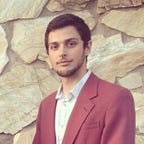Space Valley, Utah
Nestled in the mountains of Northern Utah, few would guess space industry giants would be convening to discuss the future of the industry in Logan, Utah.
The unexpected story of Cache Valley is just that, unexpected. This small community, anchored by land grant institution, Utah State University and surrounded by fields and cattle is the same community where one of the first tech companies was founded West of the Mississippi, Dairy Hearders Incorporated, one of the foundational companies in the growing history of the Silicon Slopes. It’s also home to a long history of science, research, and space exploration.
Few would know that long before SpaceX became a household name and President and COO, Gwynne Shotwell, would come to the world-renowned Small Satellite Conference to speak, SpaceX co-founder, Jim Cantrell, would be a graduate of Utah State University. Founder and Entrepreneur, Elon Musk would seek out Jim to help him carry out his vision to take humans from the pale blue dot out to the stars.
It’s “Utah Space University” that creates the gravity and keeps the space industry coming back to this rural community. For the past 30+ years, the industry has gathered to discuss the future at the annual Small Satellite Conference on USU campus as well as learn from professionals from the USU Aerospace Engineering program which routinely sends student projects to space, as well as the Space Dynamics Lab, a major partner of various space, defense, and civilian departments and agencies.
Almost routinely, individuals and institutions in the Cache Valley community are making science fiction a reality, from lowering the cost of space travel to bringing the science behind movies like The Martian and Interstellar to life.
Professor Bruce Bugbee, Director of USU’s Crop Physiology Lab and Founder of Apogee Instruments, is working to make growing food in space possible and has garnered national and international media attention for his work that is a model for scenes in the blockbuster film, The Martian.
It seems directors of some of the largest films involving space fact check their work with the best and brightest out of Cache Valley, because once again, the science in a major film, checks out according to space specialists out of Logan.
Nobel Prize winner and Logan, Utah native, Kip Thorne’s groundbreaking research and studies on black holes gave the work of Christopher Nolan’s film, Interstellar, validity.
No wonder former Utah Governor, Norm Bangerter, once declared this region, “Space Valley”. Imagine, that was decades ago, and this community is only getting started when it comes to boldly going into the future.
